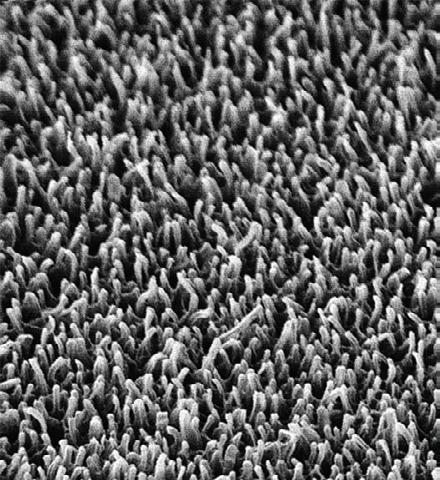
2 minute read
Using bugs to kill bugs
Using bugs
to kill bugs
©stock.adobe.com/au/ kulzfotolia

Researchers at RMIT University, Tokyo Metropolitan University and The KAITEKI Institute have developed a texture inspired by insect wings that can be used for production of antibacterial packaging.
The miniscule texture — a nanotexture — on the wings of some insects, such as cicadas and dragonflies, is deadly to bacteria despite not using any chemicals. Now, the nanotexture has been applied to plastic in a lab by an Australian–Japanese team of scientists and is able to kill up to 70% of bacteria. If applied to food packaging this could represent a passive way of keeping food safe.
“Eliminating bacterial contamination is a huge step in extending the shelf life of food,” said Professor Elena Ivanova of RMIT University and one of the researchers responsible for the texture.
“We knew the wings of cicadas and dragonflies were highly efficient bacteria killers and could help inspire a solution, but replicating nature is always a challenge.
“We have now created a nanotexturing that mimics the bacteria-destroying effect of insect wings and retains its antibacterial power when printed on plastic.
“This is a big step towards a natural, non-chemical, antibacterial packaging solution for the food and manufacturing industry.”
The antibacterial texture works through the use of nanopillars — little spikes around the size of bacteria that pulls apart and kills any microbes it comes into contact with. It is a mechanical solution and doesn’t rely on any chemicals to kill bacteria.
Researchers had been able to replicate the nanopillars but the real development was their application onto plastics — something that the researchers were worried would be too flexible a material to hold the antimicrobial nanotexture. With some advances and some back-and-forth research sharing with Japanese scientists, methods were developed for applying the texture to a range of materials.
With this development, plastics could be imprinted with the texture, marking the possibility of using it to protect food against bacteria.
The scientists are now looking for partners to help scale up the production of the packaging to commercial levels and are looking to apply the texture to softer plastics to widen its possible applications of antibacterial food protection.
The full paper was published in ACS Applied Nano Materials.
The nanotexture on a dragonfly wing as seen magnified 20,000 times.

Image credit: RMIT University
RMIT Multifunctional Mechano-biocidal Materials Research group. (L–R) Denver Linklater, Phuc Le, Elena Ivanova, Arturo Aburto-Medina, Karolline De Sousa.










